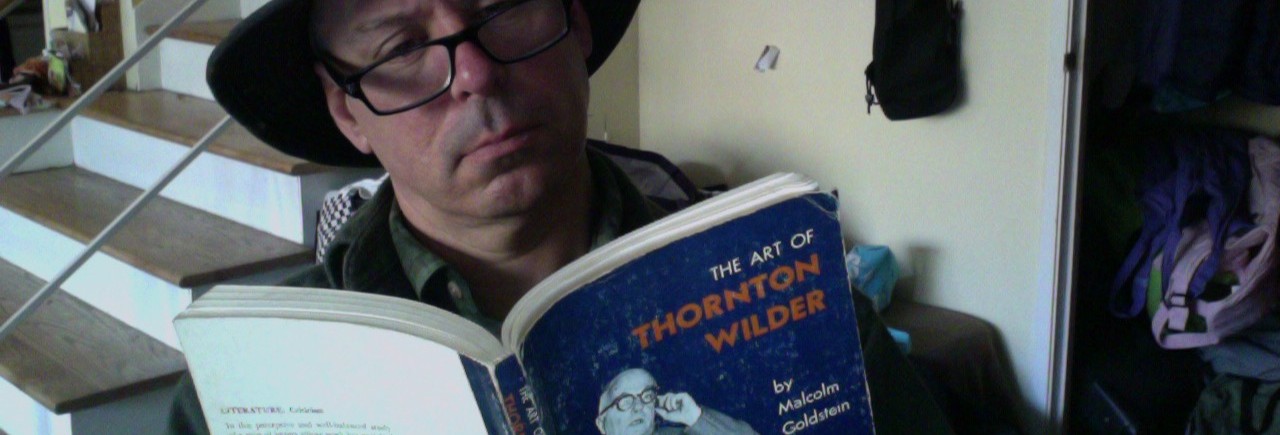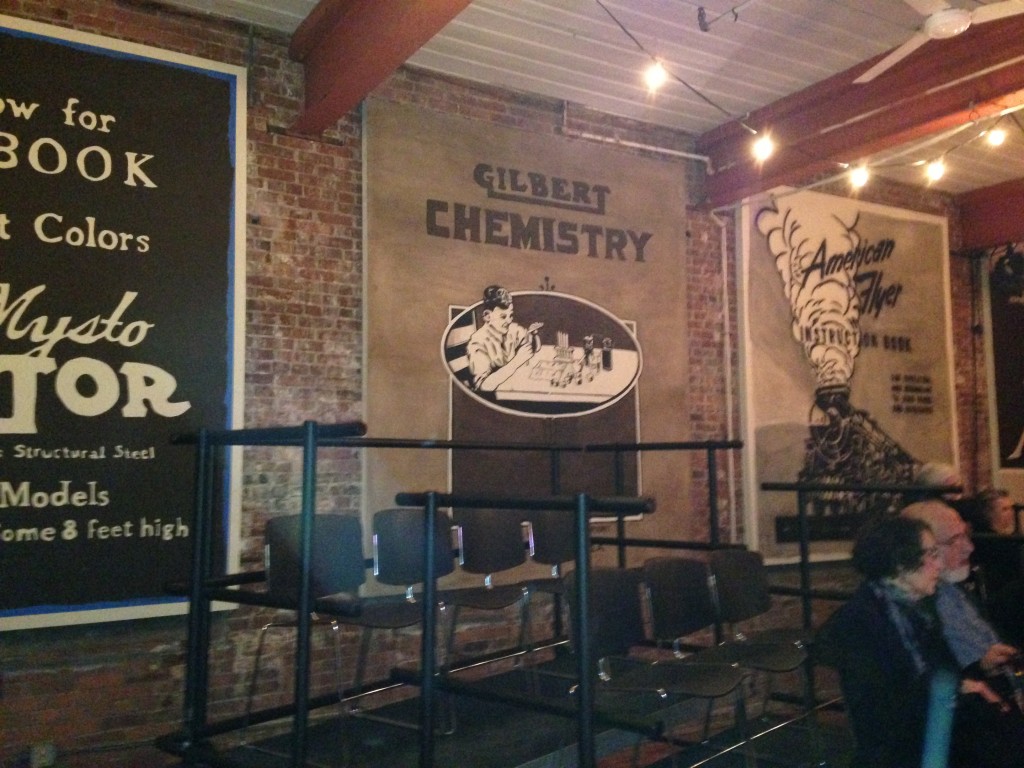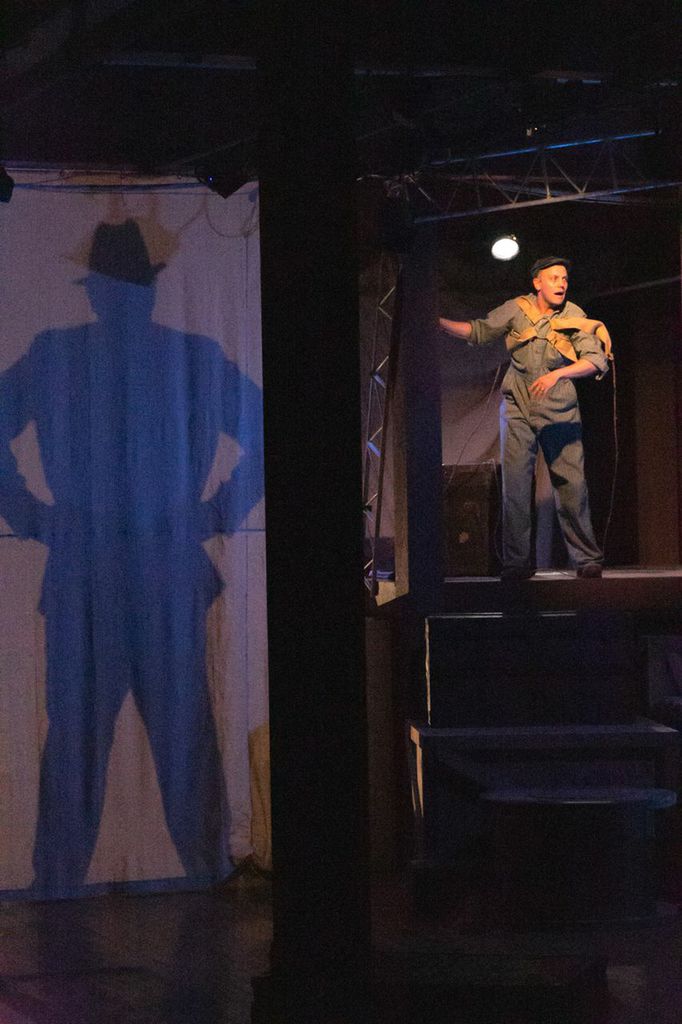
Gilbert the Great
Presented by A Broken Umbrella Theatre. Through June 8 at Erector Square, 315 Peck St. Bldg. 5 Floor 2, New Haven
Gilbert the Great just can’t stop tinkering.
This original biodrama about A.C. Gilbert is distinguished by its breadth and scholarship. Books and movies have been devoted to Gilbert, but they tend to focus tightly on his greatest toy invention, the Erector Set, or on his spirited argument before a wartime congress to let his company continue production despite rationing (a triumph which got him nicknamed “The Man Who Saved Christmas”).
A Broken Umbrella, a troupe which spends at least as much time on dramaturgy and research as it does on other (uniformly high) production values, tells its tale of A.C. Gilbert right where Erector Sets were constructed for decades, in the factory complex on Peck Street in New Haven. Yet Gilbert the Great has a much greater yarn to spin.
The play reminds us that, before he was an inventor, A.C. Gilbert was an Olympic athlete who garnered headlines for winning his event despite having to use unfamiliar equipment. A constant theme is the sexism and chauvinism of Gilbert’s time, and how he himself advertised his product exclusively to boys and neglected his two daughters in favor of his son.
To dramatize these varying achievements and emotions, the show’s five-person cast alternates the role of Gilbert amongst themselves. When he’s a child, he’s played by the endlessly chipper and boyish Ryan Gardner. Matthew Gaffney, cocky and tense, is Gilbert as athlete. Rachel Alderman, adding warmth and wonder to the endeavor, plays him when he was a young magician, pulling kerchiefs from a hat and making eggs appear from empty bags. The moody Lou Mangini’s Gilbert is a businessman and tough dad.

The other cast member is the cheerful Lisa Daly, who begins the whole show by hiding in a trunk. Trunks, and what gets stored in them, are a constant design theme for the show—not as literal a framework as, say, an erector set motif might be, but fitting for the comic-ensemble style which guides most of the action. As with its previous show, the corset-and-bicycle drama Freewheelers, A Broken Umbrella uses reams of scholarly research and a site-specific setting that evokes the actual place where some of the events in the play happened (in this case, Erector Square) but spins off in a decidedly dreamy and disjointed direction.
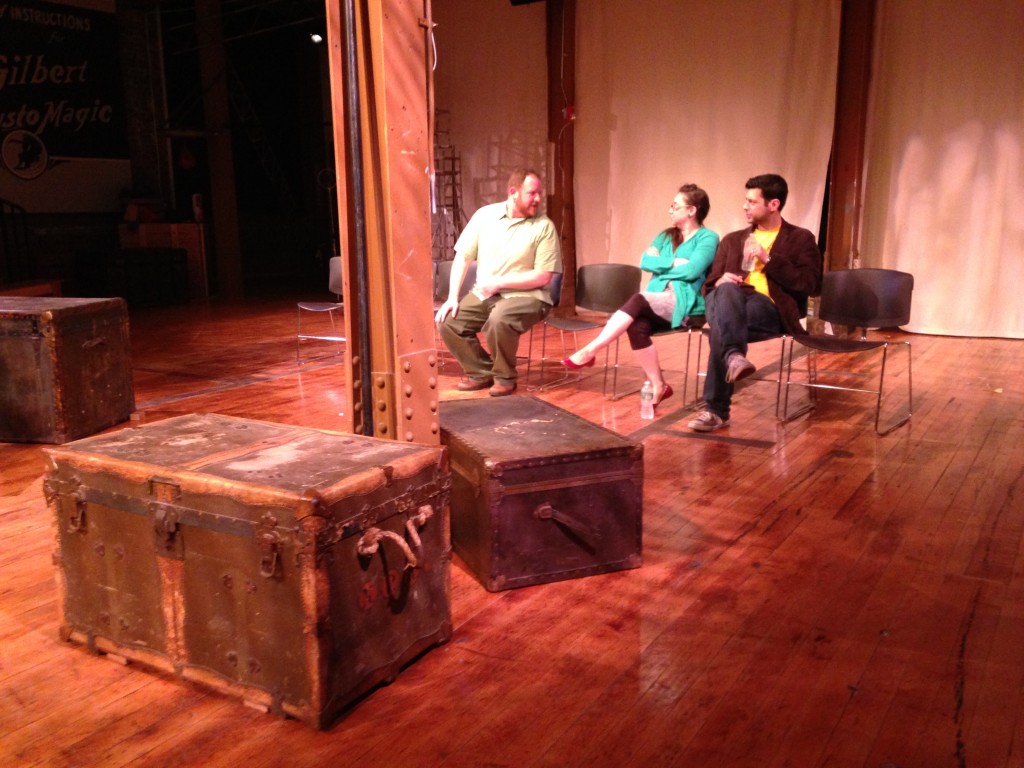
Gilbert the Great is often only as good as its latest attempt to creatively interpret the aspirations of its hero. These can run from easily dramatized episodes of political or Olympic glory to romantic and family scenarios where it’s harder to avoid clichés.
The show rises and falls scene by scene. The depiction of Gilbert’s sports glories, using mime and shadow screens and slow-mo acrobatics, is masterful, while some of the scenes designed to show his chauvinistic nature (favoring his third child, a son, over his two daughters) drag. A Broken Umbrella also sets the bar high in creating a script and performance style that attempts to appeal to children and adults simultaneously. Older audience members may feel condescended to at times, while kids may be bored in places. These stylistic shifts are compounded by scenes which range from engrossingly realistic to jokingly fourth-wall-breaking. At one point the lights switch off, and a character quips “This is lending itself to something more theatrical, wouldn’t you say?” It ends up being more hit-or-miss than something-for-everybody.
As is ever the case with A Broken Umbrella shows, the scholarship behind the script is remarkable, bringing out illuminating details of old New Haven. Just as reliably, the company has created a new performance space out of an abandoned room. They’ve cleared out a large area of Erector Square’s Building 5 and installed a large stage area (interestingly shaped as a triangle rather than a conventional rectangular thrust), a sound booth, lots of light and sound equipment (the recorded musical score comes through so crisply I had to ask if it was being performed live) and walls festooned with vintage Erector set ads. In the lobby, there’s a museum-worthy exhibit touting the many toy-industry triumphs of A.C. Gilbert. (A key sponsor of the show is Hamden’s Eli Whitney Museum, which has had its own collection of Gilbertiana on display for years.)
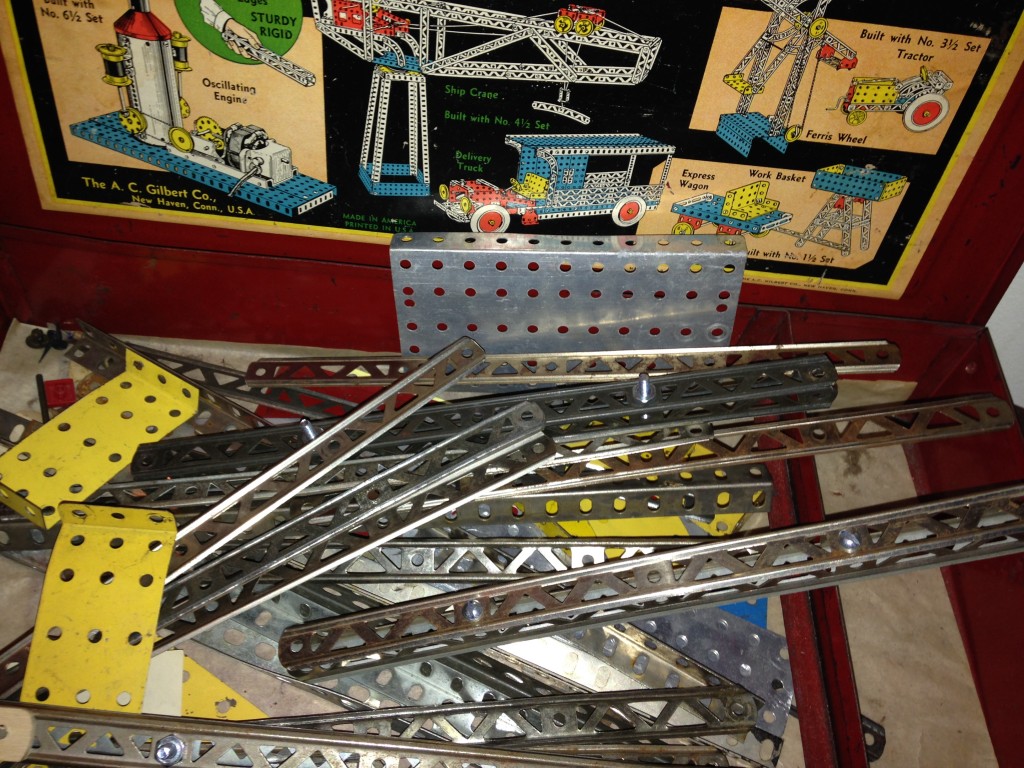
A Broken Umbrella has surrounded itself with totems that tie back to its legendary New Haven-based hero. Unlike so many small theater companies (especially in this area), they’re unafraid to experiment with form and content, dividing the central role among several different actors and finding original ways to transform old biodrama tropes. That the show isn’t more fluid, or that it’s still constrained by a dogged adherence to chronological storytelling, shouldn’t be much of a surprise. Gilbert the Great has become its own Erector Set of a play, taking itself apart and putting itself back together, a true educational toy.
